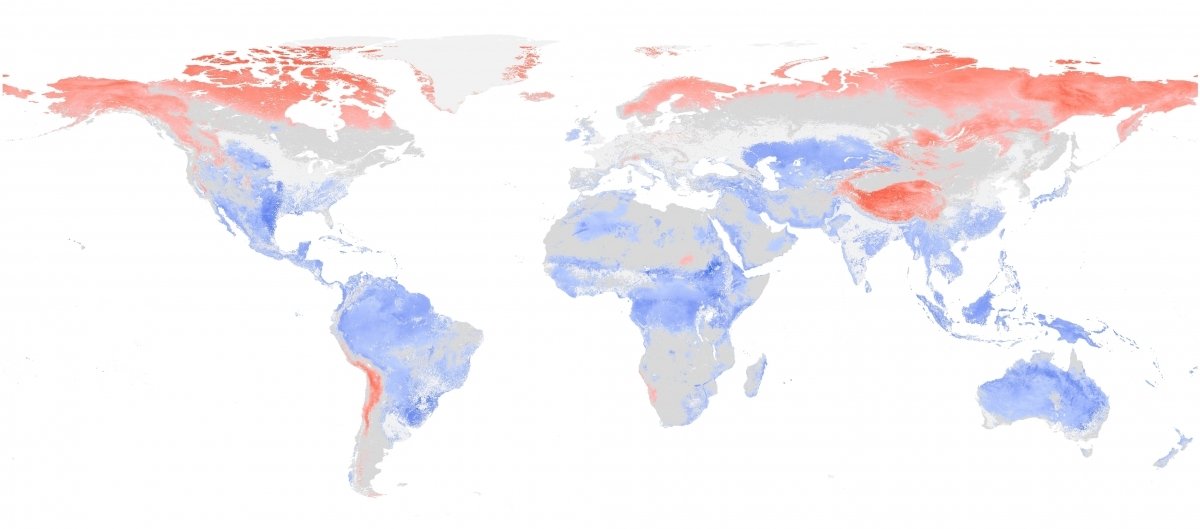Mapping global terrestrial nitrogen and phosphorus limitation
Nitrogen- and phosphorus limitation constrains the amount of CO2 that can be absorbed by plants. But global maps of nutrient limitation are still lacking. An international team, amongst whom Caspar van Lissa, mapped global patterns of nitrogen and phosphorus limitation. They did this using the ratio of site-averaged leaf N and P resorption efficiencies of the dominant species across 171 sites. This work will help to improve representation of nutrient limitation in vegetation and Earth system models, and provides a benchmark of nitrogen- and phosphorus limitation to constrain predictions of the terrestrial carbon sink.
The team validated the predictions using a global database of nitrogen- and phosphorus-limitation experiments based on nutrient additions. Nitrogen alone limits 18%, and phosphorus limits 43 %, of natural terrestrial land area - excluding cropland, urban, and glacial areas. The remaining 39% of natural terrestrial land area could be co-limited by nitrogen and phosphorus, or weakly limited by either nutrient alone. Globally, they found a shift from relative phosphorus- to nitrogen limitation for both higher latitudes and precipitation seasonality and lower mean annual temperatures, temperature seasonality, mean annual precipitation, and soil clay fraction.

Reference
Du, E., Terrer, C., Pellegrini, A.F.A., Ahlström, A., van Lissa C.J., Zhao, X., Xia, N., Wu, X., Jackson, R.B. 2020. Global patterns of terrestrial nitrogen and phosphorus limitation. Nature Geoscience, https://www.nature.com/articles/s41561-019-0530-4.

